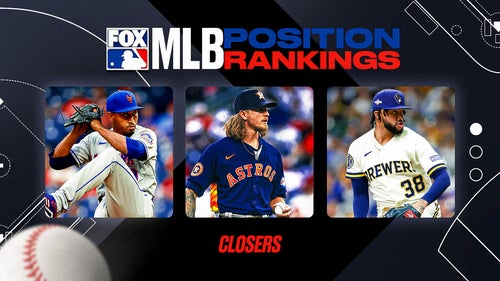
Bud Selig wowed by Marlins' ballpark
Commissioner Bud Selig offered a one-word review of the Miami Marlins' new ballpark.
''All you can say is, `Wow,' '' Selig said.
Muhammad Ali had the same reaction.
Selig's critique came 90 minutes before the first pitch of the first game Wednesday in the Marlins' season opener against the World Series champion St. Louis Cardinals, who won 4-1.
The ballpark's retractable roof, which is expected to be closed for all but about 10 games, was opened 30 minutes before the start. When the Marlins were introduced, each starter was accompanied by a young lady dressed as Latin showgirl.
The surprise guest delivering the ceremonial first pitch: Ali. He emerged from behind the center-field gate in a cart alongside team owner Jeffrey Loria, who had his arm around the former heavyweight champion.
''He's so strong,'' Loria said. ''I was holding onto his hands, and he just about destroyed my hand.''
When they pulled up next to the mound, Marlins third baseman Hanley Ramirez gently took the ball from Ali's hand.
Loria said Ali's appearance had been in the works for two months.
''I wanted to give the fans the sense that we're doing special things here,'' Loria said. ''He is still the most famous person on the face of the earth.''
Ali's reaction to the ballpark?
''He thought it was quite special,'' Loria said. ''He said, `Wow.' ''
Selig lobbied for years in support of Loria's campaign for the ballpark. There was considerable local opposition to the $634 million project, which was financed primarily with tax money, but Selig predicted critics will eventually be swayed.
''Given what went on here, this is a very special day,'' he said. ''Five years from now, you won't find anyone against this. You can debate the economic advantages, but new ballparks just have enormous sociological value. It makes that city a better place to live.''
Two other teams still seek new homes — the Tampa Bay Rays and Oakland A's.
After finishing last in the NL in attendance each of the past seven years, the Marlins have had brisk ticket sales, and Loria said he's certain fans will continue to come as the season progresses. He said the Marlins enjoyed good attendance in their first season, and again in 1997 and 2003 when they won the World Series.
''They come when they're given a good club,'' Loria said. ''And we've given them a very good club this year. It's a team where I expect us to be there in the end.''
Selig is also optimistic about the Marlins' long-term future.
''They've got potential they never had before,'' he said.
New manager Ozzie Guillen said attendance ultimately will depend on the team.
''To keep people excited, we've got to win games,'' Guillen said. ''That's how you keep the excitement in any city, with any ballpark.''
In anticipation of bigger crowds, the Marlins nearly doubled their payroll this season to more than $100 million, and they expect to contend for the NL East title.
Regardless of the team record, the ballpark roof should make baseball more appealing in South Florida. Steamy weather and the frequent threat of rain made baseball outdoors a tough sell, Loria said.
''It's impossible to play baseball in Miami in the summer,'' he said.
Selig described the new ballpark as distinctive. Among its unique features is a colorful home-run sculpture beyond the center field wall, which some have called gaudy or worse.
The 73-foot-tall art work commissioned by Loria, a New York art dealer, springs into motion when a Marlins player homers, with blue marlins diving into splashing water.
''It's a statement about Miami,'' Loria said. ''It's a lot of things going on at once. It's just meant to make you smile while the local hero is running around the bases, hopefully with people in front of him.''
Not all of Loria's players like the sculpture. When left-hander Mark Buehrle was asked about it, he jokingly looked over his shoulder.
''Is Jeffrey around here?'' Buehrle said with a smile. ''I prefer not to comment.''
Said Guillen: ''Mr. Loria made it. It's beautiful.''










